So I was practicing on one of my guitars (a Schecter C-1), and all the sudden the amp started buzzing like crazy, and I couldn’t hear any output from the pickups. I realized that I had just shifted, and that the cable had shifted on the guitar’s jack.. so I unplugged it, and saw that the jack was loose. Being the geek that I am, I figured I’d set the guitar on my desk, grab the soldering iron (which was about a foot away), and figure out what was going on.
[ad name=”Google Adsense 728×90″]
I pulled the backplate over the electronics off, and didn’t see anything obviously wrong under there, but did note a few wires that were interesting.. hmm, we’ll get back to that. I then disconnected the output jack, and saw that the ground had come loose from the output jack – it was probably wired in a way that would cause any twisting of the jack to pull directly on the ground – bah. Here’s what it looked like after I had stripped back an extra 1/4″ or so of the outer plastic shield back, and twisted the ground wire back up to solder it:
Apologies for the picture quality – this was in my basement with my flash-less camera phone..
It was a pretty easy job to remove the old wire, and get the ground soldered back in properly. I am a bit out of practice, so it’s not pretty, but it is functional:
I tried to solder it at an angle that would make sure that the guitar cable couldn’t snag it when it was plugged in. It seems to be pretty good:
I then made sure that there wasn’t any extraneous noise, and that the guitar worked — as expected, this fixed it – yay! Now, back to the fun part.. as I was reassembling the guitar, I took a closer look under the back coverplate:
After some cable tracing, I found out that the stray wires were what I was hoping for.. take a look at the red and white wires in this picture:
The humbuckers installed on this guitar (a Seymour Duncan SH-6b Distortion on the bridge, and a Seymour Duncan SH-2n Jazz on the neck) can be set up to allow them to split into single-coil pickups, and to run in parallel — *nice*! However, on my guitar, they are just hardwired for humbucking mode.
This means, of course, that by repairing the guitar, I “inherited” (aka gave myself) a new project — to set up the guitar for push/pull operation to split the pickups. ;) It’s a relatively cheap job, and fairly easy to do.. sounds like fun! This particular model has two volume knobs (one per pickup), and a shared tone knob.. so I need to decide if I want to replace both volume knobs (to allow me to split the pickups individually), or just replace the tone knob and split both pickups together.
If you’ve done this type of project before, I’d appreciate any advice!
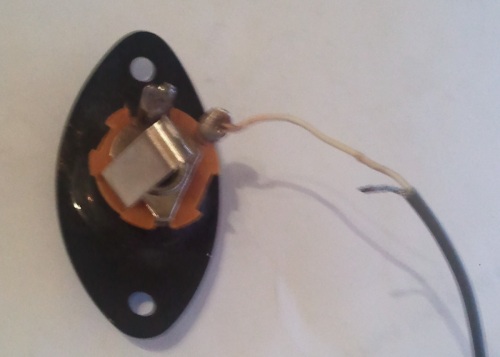
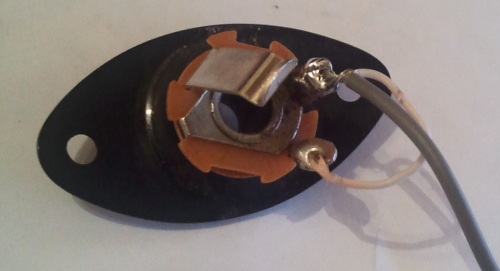
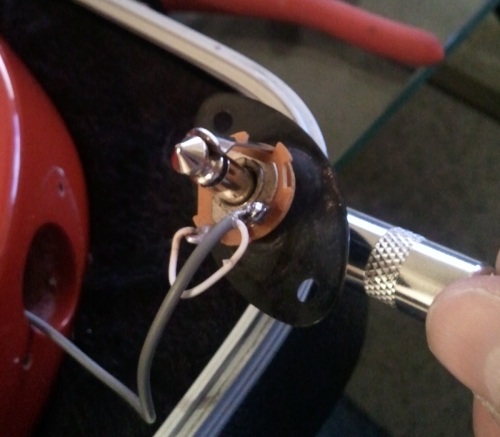
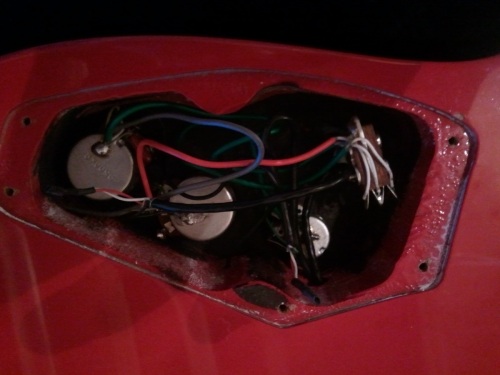
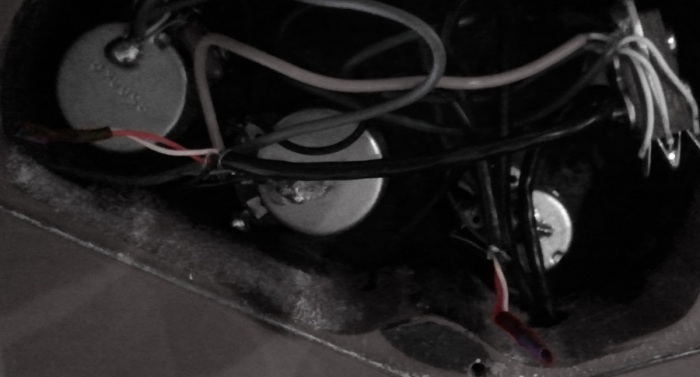
Although I see you posted this well over a year ago, and your Schecter may be rewired by now, I’ll still volunteer my opinion: Split them individually. It will give you more sonic options. If you want to preserve humbucking, consider switching each pickup for parallel coil operation instead of splitting – you’ll still get that single-coil sound, with a slightly higher output signal than with splitting (which simply cuts out one of the two coils.) See http://www.seymourduncan.com/images/schematics/501005-110.pdf.
Many years ago, when I worked in a guitar store, I wired the aftermarket Duncans in my Gibson Midnight Special (an L6S w/o rotary switch and cheap tuners) with two micro switches to invert coil polarities. It gave a very nasal tonality, but the output was weak (summing the inverted outputs of two coils in the same humbucker yields only the phase differences, plus any frequency or voltage output differences between the two coils.) Better to have output from only a single coil, or to run them in parallel.
BTW, thanks for your postings on HSA vs. PPO health care considerations. That’s how I found your blog, and I found those posts helpful.